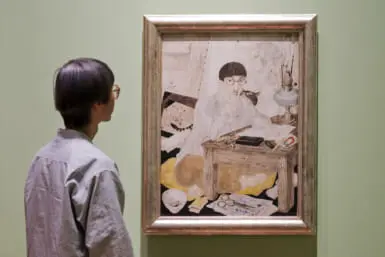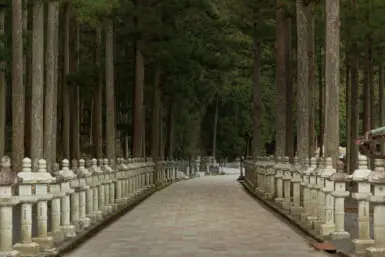There’s nothing wrong with being proud of yourself, or something you’ve accomplished. Unless you take it into overdrive — then you might be accused of unwarranted jigajisan.
Jigajisan (自画自賛)
Meaning: Singing one’s own praises, blow one’s own trumpet, congratulate oneself, express pride in one’s own accomplishments or possessions, flatter oneself, grandstand, pat oneself on the back.
Literal translation and kanji breakdown: As is often the case, this expression is better split into two parts. Jiga (自画) translates to self-portrait and is interpreted as painting a picture of oneself. Jisan (自賛) is self-praise and together they mean praising oneself for one’s own painting. As for how the act of admiring your own work became a synonym for grandstanding, the history is a little more complicated.
Jigajisan: The Origins
Let’s head back to China’s Tang dynasty where you had what’s known as gasan (画賛), text written on portraits or other paintings. It was generally written by someone else other than the original artist. As before, ga (画) means picture and this time it’s paired with san (賛), or praise, to mean praise for a painting. It can also be referred to as just san (賛).
The gasan in China was often a review, praise or commentary of the art or a poem, written either directly onto the painting itself or next to it. You might even go as far as to say it was a kind of collaborative piece between the viewers and the original artist.
Eventually the gasan trend spread to Japan, but developed quite differently. Written on a blank space above the painting, or, if there wasn’t enough room, on a piece of paper next to it, the san was mostly used within the Zen Buddhist community. During the Kamakura Period, Zen monks would gift their disciples a portrait of themselves. It would have a san written on it and was considered a form of certification to prove satisfactory completion of ascetic training. By the Muromachi Period, shigajiku (hanging scroll paintings with Chinese poetry gasan) in the form of Zen paintings with san poems were produced on a large scale.
While the whole history and development of gasan is more complicated, it’s fair to say that as calligraphy became more intertwined with the original painting, more artists would create “complete” artworks featuring both. Because of this, jigajisan didn’t have the negative meaning we associate with it today. This came later, as the expression was used more broadly.
Fun fact: One of the oldest examples of a gasan in Japan is on the artwork “Shingon Shichisozo” by Kukai, which is stored at Toji Temple in Kyoto.
Jigajisan: Related Expressions
手前味噌 Temae-miso Self-flattery, singing one’s own praises
自己顕示 Jikokenji Making oneself conspicuous, pressing one’s own cause
独り善がりHitori yogari Self-conceit, self-importance, complacency
独善 Dokuzen Self-righteousness
自己批判 Jiko-hihan (antonym) Self-criticism
自省 Jisei (antonym) Self-examination, reflection
Using “jigajisan” in a sentence
Jigajisan is more often used jokingly about oneself in a self-deprecating manner than about someone else. When used about someone else it has a much stronger negative meaning.
自画自賛だけど、自分が作った料理は一番美味しいよね。Jigajisan dakedo, jibun ga tsukutta ryouri wa ichiban oishii yo ne. I know I sound immodest, but the food one makes oneself tastes the best, doesn’t it?
彼の話はいつも自画自賛ばかりでうんざりする。Kare no hanashi wa itsumo jigajigan bakari de unzari suru. He’s so full of himself and it disgusts me.
画家は、「我ながらよく描けた。」と自身の絵を自画自賛した。Gaka wa, “Warenagara yoku kaketa,” to jishin no e wo jigajisan. “This is well done, even if I do say so myself,” the artist said, praising herself.
自画自賛するというのは、プラス思考でもあるのだから、良いことだと思うよ。Jigajisan suru to iu no wa purasu shikou demo aru no dakara, yoi koto da to omou yo. I think there are positive aspects to being proud of yourself, so it’s a good thing.
Want more? Follow our weekly Yojijukugo Japanese Idiom series, published every Friday. Learn the meaning of “ichibushiju” here, “fuminfukyu” here and “keikou-gyugo” here.









